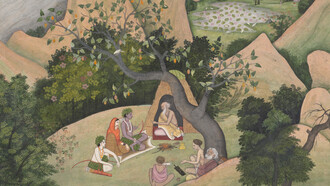One of my favourite seasons is spring. It signifies the beginning of a fresh new year for me. When everything comes back to life, the trees are in full bloom, and the ground is covered in nice green grass, it's a time for new beginnings and new lives. There's a certain magic in the air when warm sunshine, a gentle breeze, and fresh air combine. Imagine experiencing this in Japan, where Sakura, the most enchanting season of the year, unfolds. The beauty of Sakura is a sight to behold, a spectacle that draws you in and leaves you in awe.
In my culture, we celebrate Easter instead of Sakura. This involves decorating our home with colourful flowers and painted eggs and observing religious traditions.
In Japan, Sakura is not just a season but a profound symbol of the transient beauty of life. It expresses the philosophy of Wabi-Sabi and incorporates the Shinto ideals of impermanence, reminding us to cherish every moment. This cultural significance makes the arrival of Sakura a much-anticipated event in Japan.
The season is inspired by Wabi-Sabi, which celebrates imperfection and finds beauty in flaws. In our society, perfectionism is often regarded as the ideal, but is it actually achievable? Striving for perfection can lead to undue stress, anxiety, and unrealistic expectations. Rather than focusing on being flawless, we should accept our flaws and imperfections as part of what makes us unique and human. Let's celebrate progress instead of perfection. This philosophy can be applied to various aspects of life, such as home decor, relationships, and food. Having been to Japan, I have witnessed how they incorporate this philosophy into their daily lives.
Shinto is a religion that originated in Japan in the 6th century. It has three major types: shrine, sect, and folk. Shinto is an optimistic faith emphasising respect for nature, harmony, and purity. Their gods and spirits have their shrines.
The arrival of spring in Japan is not just a change in weather but a cultural event. It's heralded by the enchanting blossoming of Sakura, a sight that is celebrated through a unique practice known as Hanami. Hanami, which translates to “flower viewing” or “flower watching,” is a special event that revolves around the stunning cherry blossoms. This tradition, dating back centuries, is a testament to Japanese culture's deep-rooted respect for and appreciation for nature. The spectacle begins in mid-January in Okinawa, where the landscape is transformed into a vibrant sea of flowers. It continues across the entire country from the end of March to early May.
During Hanami, people gather under the blooming cherry trees to enjoy outdoor parties, picnics, sake, and viewing parties. Yozakura, the Night Sakura, is a night-time celebration of Hanami where paper lanterns are hung, creating a magical atmosphere. Older people enjoy Umemi, a more peaceful celebration of plum viewing, compared to the lively Sakura parties.
This tradition dates back to the Nara period in the 8th century (710–794 AD), when people in Japan admired the Ume blossom. Some believe this tradition originated from the Chinese habit of enjoying wine and poetry under the blooming plum tree.
The Man'yoshu is the oldest collection of classical Japanese poetry from this era. Man'yoshu translates to "Collection of Ten Thousand Leaves.” It contains 4,500 Waka poems, divided into 20 books of poetry. This collection includes many amazing poems by various poets. Allow me to highlight a few. During the Asuka period, Princess Nukata and Kakinomoto no Hitomaro were prominent figures, and in the Nara period, Takechi no Kurohito was a prominent figure.
Excerpt from the poem by Princess Nukata:
Nikita-tsu ni funa norisemu to tsuki mateba
Shio mo kanainu ima wa kogiidena
At Nikita Harbor we have waited for the moonrise before boarding our boats. The tide has risen, now let us row out!(Man'oshu 1:8)
Japan holds a special place in my heart for numerous reasons. The culture, which is still preserved by everyone, never ceases to amaze me. The cleanliness, purity, and lifestyle that the Japanese people lead are impressive. They have rules for everything, and they strictly follow them. The way they prepare their food is also noteworthy. I remember my first Hanami experience in Japan, sitting under the blooming cherry trees with friends, enjoying the festive atmosphere and the beauty of Sakura. It was a truly magical experience that I will cherish forever.














